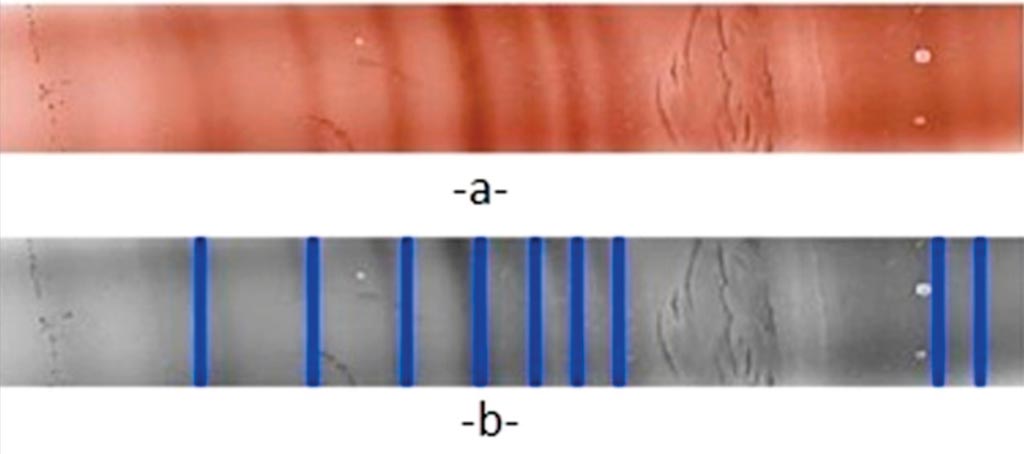Images Evaluated for CSF Electrophoresis of IgG Bands
By LabMedica International staff writers
Posted on 02 Jan 2018
Multiple sclerosis (MS) involves inflammatory lesions of white matter in the central nervous system (CNS) that spread over time. In MS immune reactions lead to intrathecal synthesis of specific immunoglobulins (IgGs) that can be detected in biological fluid samples both quantitatively and qualitatively by isoelectric focusing of supplementary oligoclonal IgG bands.Posted on 02 Jan 2018
The detection of oligoclonal bands (OCBs) in cerebral spinal fluid (CSF) by isoelectric focusing (IEF) is a common diagnostic tool. Chromogenic staining of immunoblots facilitates detection. The higher the concentration of the IgG bands, the greater the intensity of the colors and the more readable the profile, makes interpretation easier.

Image: Isoelectric focusing on agarose gel for immunoglobulins: a) Original scanned color image, b) gray scale image (Photo courtesy of the Catholic University of Lille).
Scientists at the Faculty of Medicine et de Maieutique (Lille, France) performed IgG isoelectric focusing on agarose gel and immunoblot membrane (10 cm × 8 cm). A simple tool, using the MATLAB application, to facilitate and improve isoelectric focusing profile analysis was evaluated in terms of its sensitivity, repeatability and reproducibility. A comparison between human readers and semi-automatic method was also been performed. IgG concentrations in cerebrospinal fluid generally range from 20 mg/L to 45 mg/L.
The team found that results from the semi-automatic method were found to be equivalent or superior to generally employed laboratory methods. Repeatability analysis for semi-automatic processing yielded coefficients of variation (CVs) in the 3%–7% range, and using a sample with an estimated IgG concentration of 200 mg/L, four bands were still visible after dilution to 5 mg/L, corresponding to band concentrations of 1.1mg/L–1.6 mg/L. They also found that discordances between visual inspection and automatic analysis only appear at threshold levels for interpretation (the gray zone).
The comparison between visual reading and automatic reading was: 24/31 profiles were concordant, four visually oligoclonal profiles were said to be non-oligoclonal by the automatic inspection and three visually non-oligoclonal profiles were said to be oligoclonal by the automatic method. The semi-automatic method has acceptable performance for routine implementation. The study was available online on November 10, 2017, in the journal Practical Laboratory Medicine.
Related Links:
Faculty of Medicine et de Maieutique














